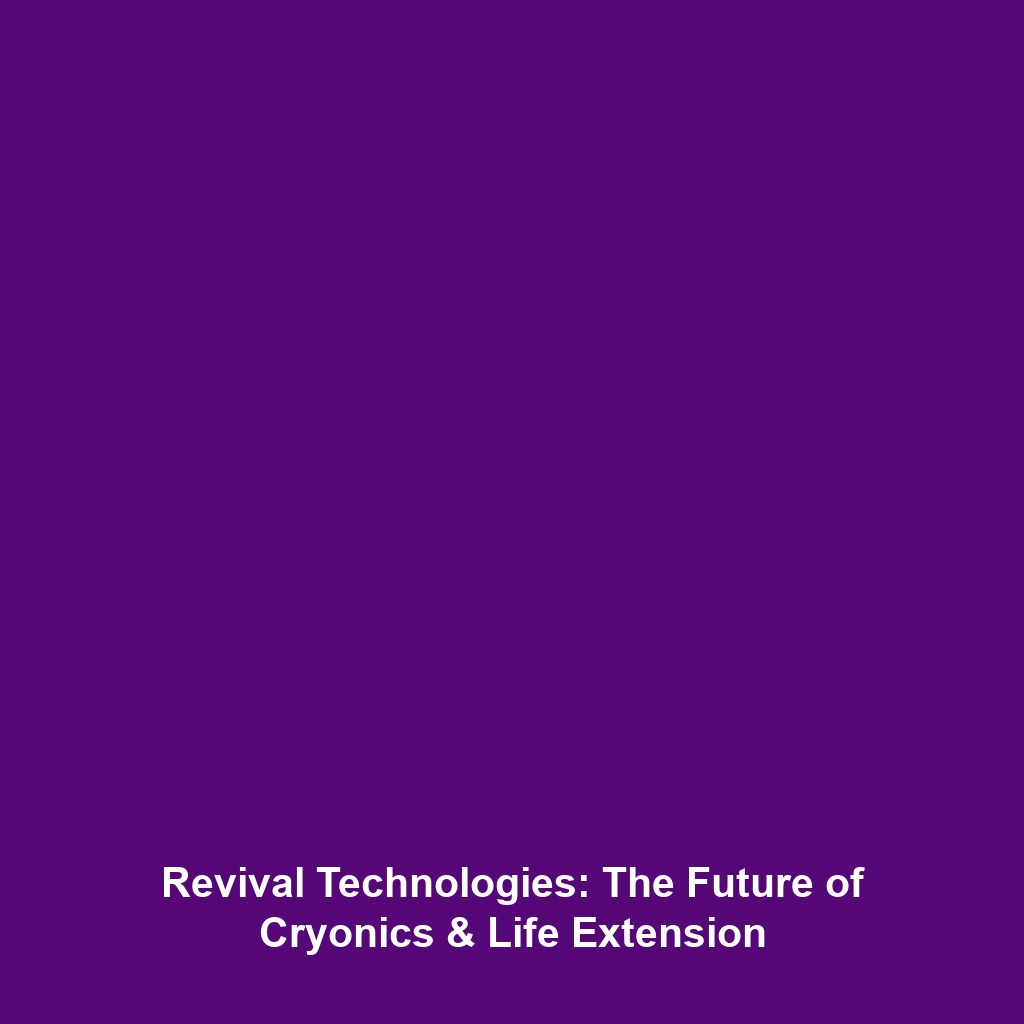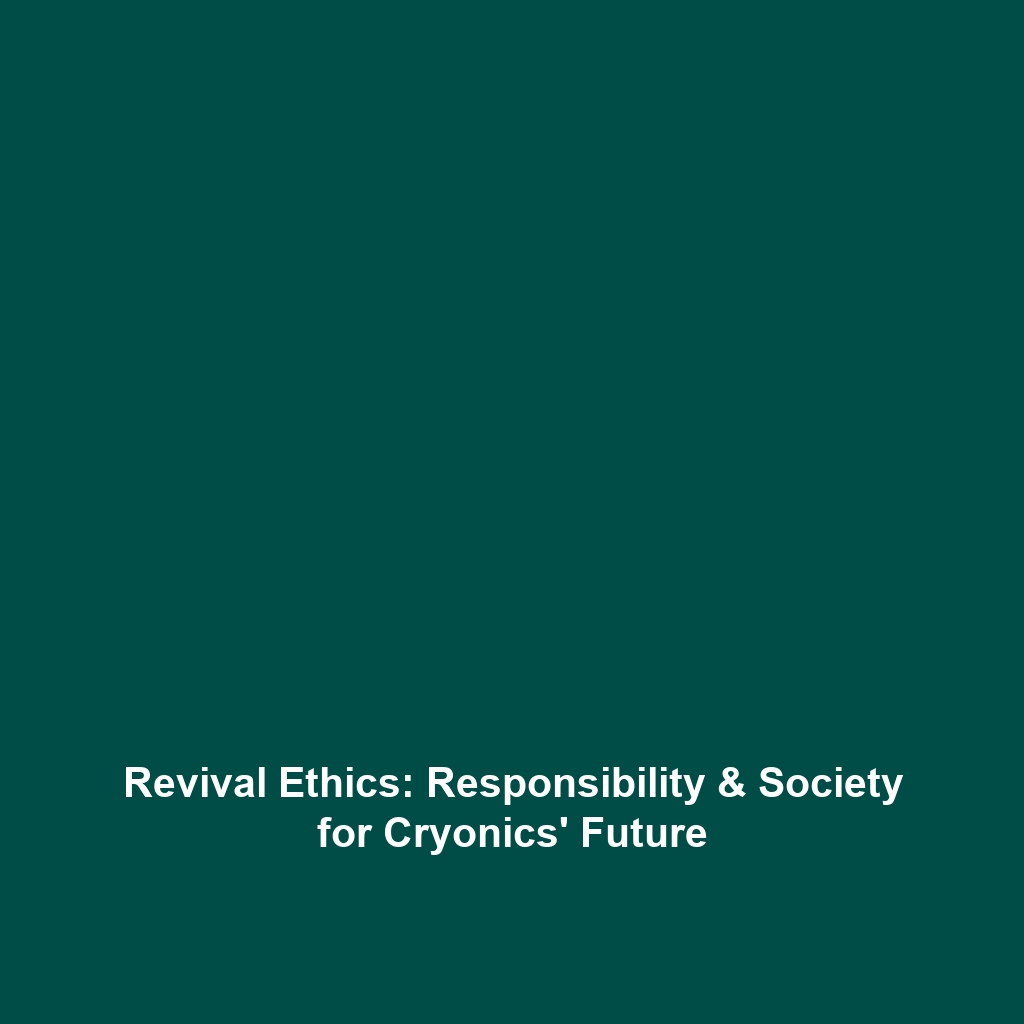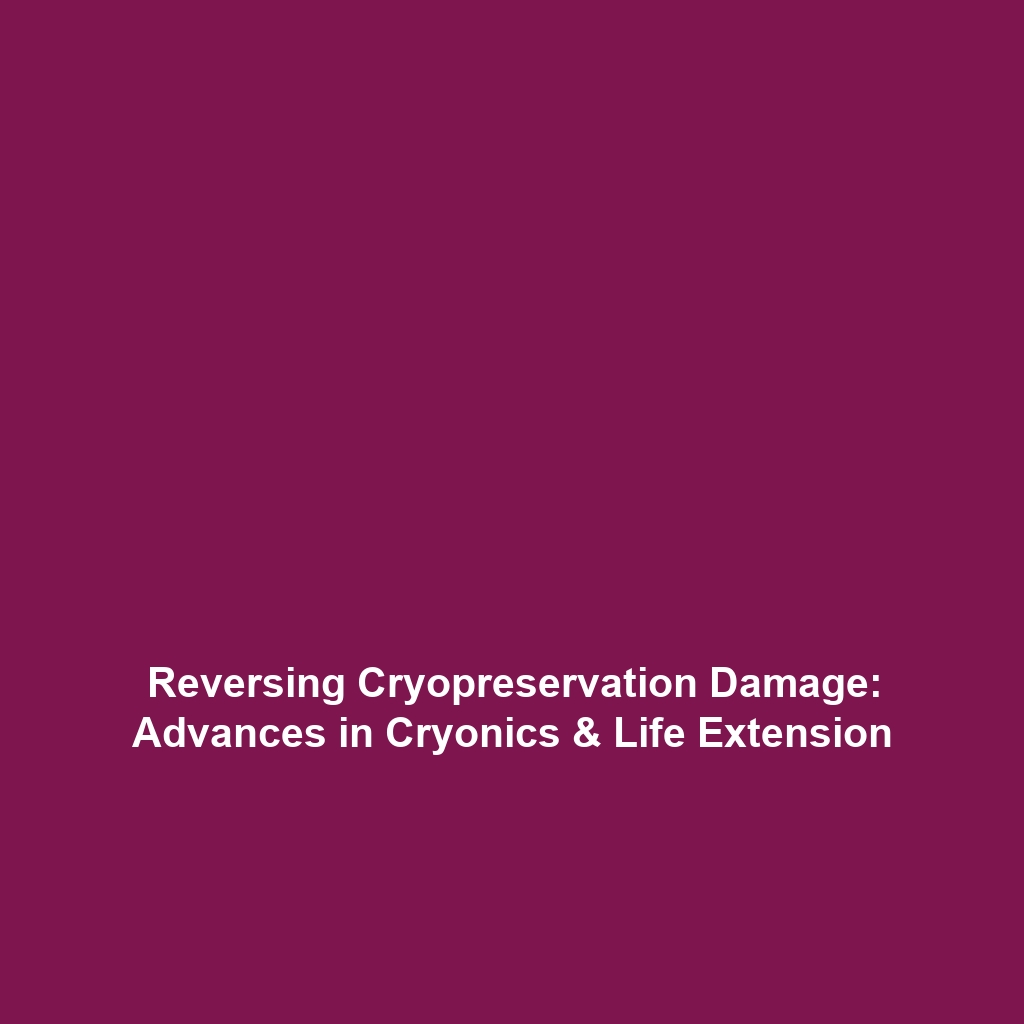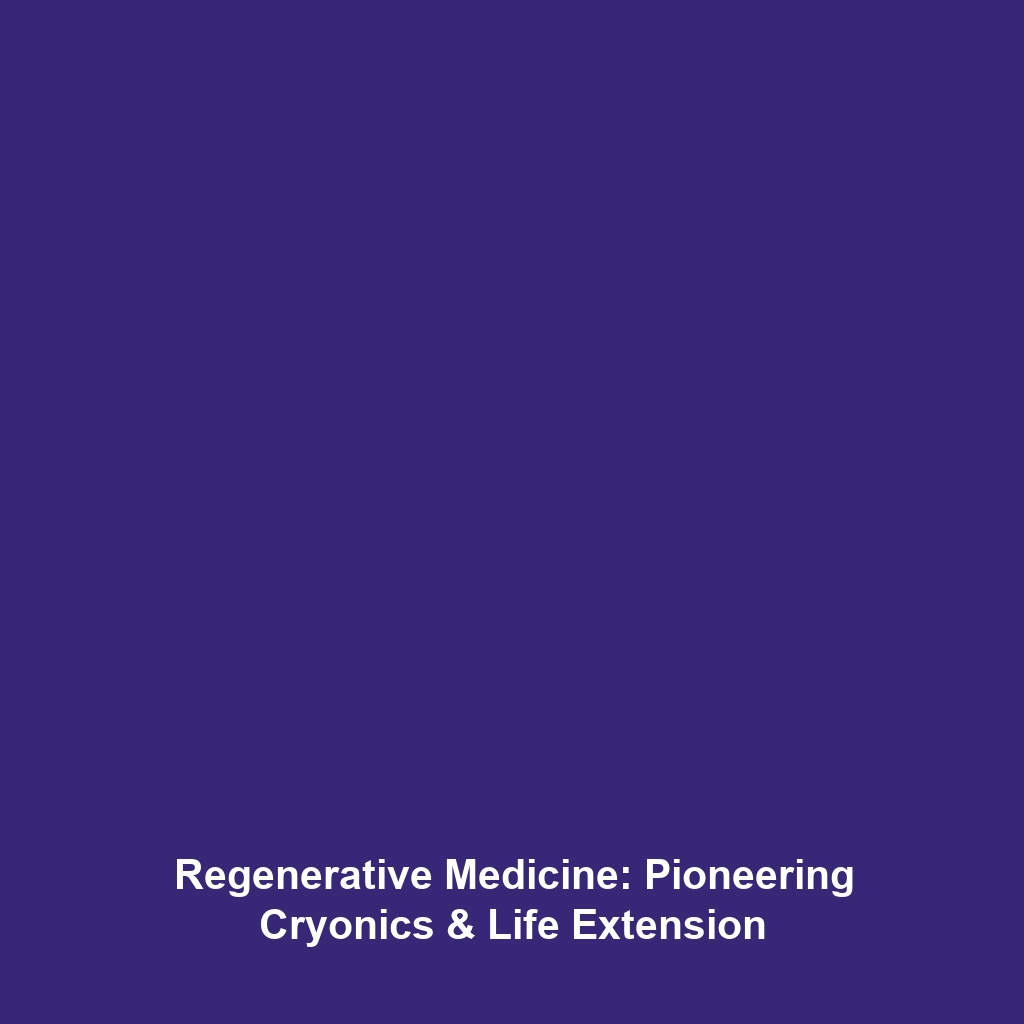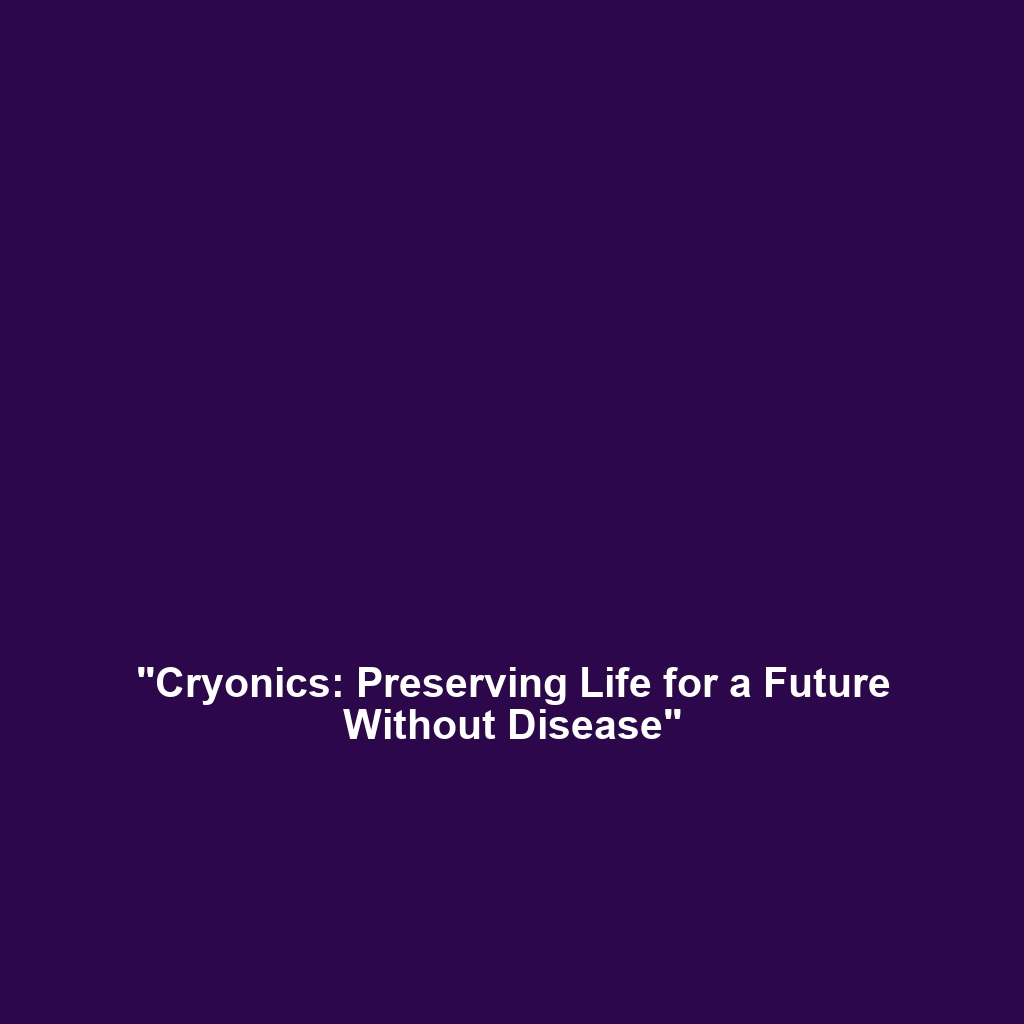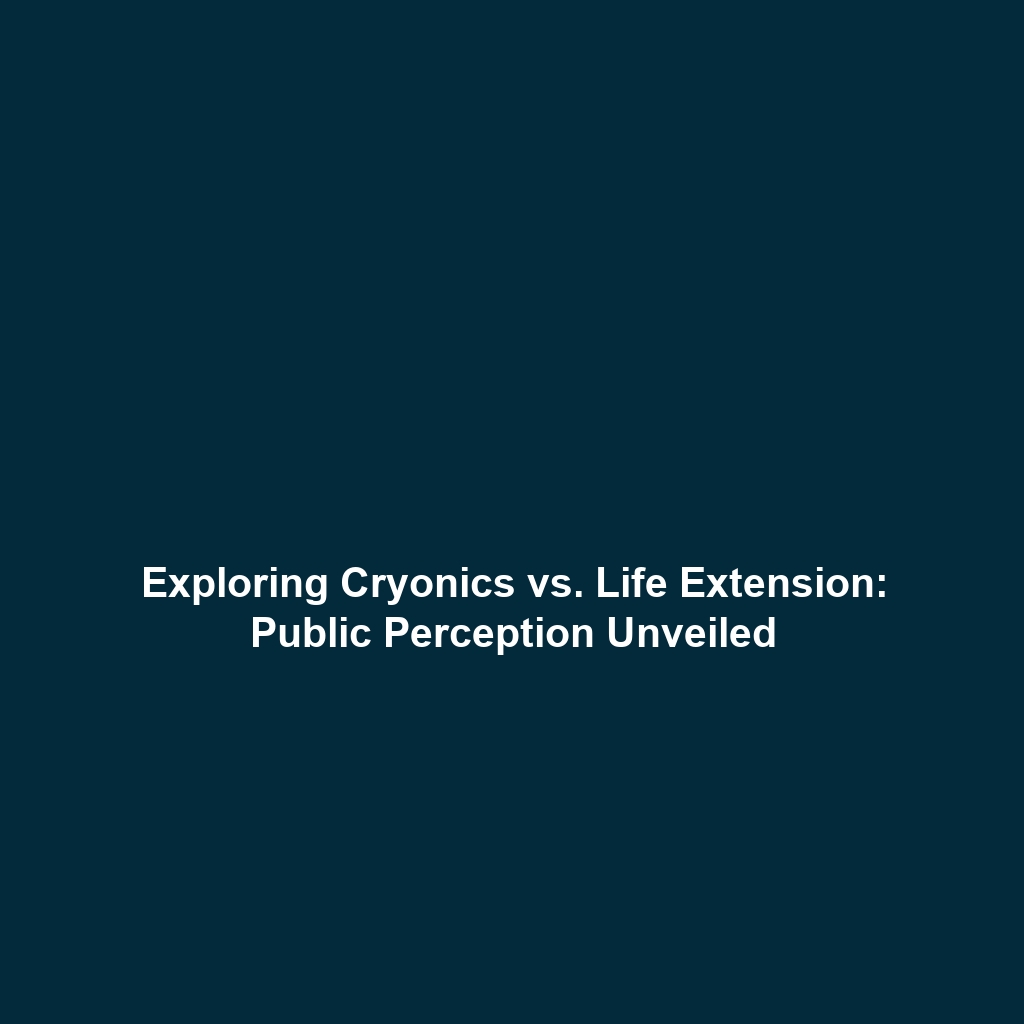Revival Technologies: A Breakthrough in Cryonics & Life Extension
Introduction: Revival Technologies represent a pivotal advancement in the realms of Cryonics and Life Extension. By focusing on the revival of preserved biological systems, these technologies not only promise to extend human life but also aim to enhance the quality of life post-revival. As global interest in life prolongation grows, understanding Revival Technologies becomes crucial in the broader context of how we consider mortality and the potential for future healthcare innovations.
Key Concepts of Revival Technologies
Revival Technologies encompass various scientific approaches and methods aimed at restarting biological functions in organisms that have undergone preservation through cryonic methods. Key concepts include:
- Cryopreservation: The process of cooling and storing cells, tissues, or entire organisms at very low temperatures to halt biological activity.
- Vitrification: A method of cryopreservation that turns biological material into a glass-like state, preventing ice crystal formation that can cause cellular damage.
- Bioregenerative Medicine: An emerging field that seeks to understand and apply biological principles in reversing the effects of aging and damage, relevant to Revival Technologies.
These principles outline a potential pathway for advancing Cryonics and Life Extension, underscoring the necessity for ongoing research and development within this field.
Applications and Real-World Uses
The applications of Revival Technologies are both diverse and promising, especially in the context of Cryonics and Life Extension:
- Medical Research: Revival Technologies are utilized in medical research to enhance the preservation of organs for transplantation, potentially increasing success rates.
- End-of-Life Care: These technologies may offer new avenues for individuals at the end of life to consider options for future revival.
- Cell and Tissue Engineering: By understanding Revival Technologies, scientists are better equipped to engineer tissues that can survive extreme preservation conditions.
Such applications showcase how Revival Technologies serve as a critical bridge between Cryonics and practical medical advancements.
Current Challenges
Despite the advancements, several challenges persist in the field of Revival Technologies:
- Cellular Damage: One of the main challenges is ensuring that cells remain undamaged during the cryopreservation process.
- Public Perception: Ethical concerns and skepticism regarding the legitimacy of Cryonics impact funding and research opportunities.
- Technological Limits: Current technologies are still limited in their ability to revive complex organisms, raising questions about feasibility.
Addressing these challenges is vital for the continued development of effective Revival Technologies.
Future Research and Innovations
Looking ahead, several innovations are on the horizon that could enhance the efficacy of Revival Technologies:
- Improved Vitrification Solutions: Development of new cryoprotectants to minimize ice crystal formation and cellular damage.
- Gene Editing Technologies: Integrating CRISPR and other genetic tools to repair cellular damage or enhance biological resilience during preservation.
- Artificial Intelligence: Leveraging AI for optimizing preservation techniques and predicting revival outcomes based on genetic markers.
Such breakthroughs could fundamentally alter the landscape of Cryonics and Life Extension, unlocking new potentials for human longevity.
Conclusion
In summary, Revival Technologies hold significant promise within the domains of Cryonics and Life Extension. As research progresses and challenges are met with innovative solutions, the potential to extend human life and improve post-revival quality is becoming increasingly tangible. For those interested in exploring more about Cryonics and its future implications, we invite you to read our articles on Cryopreservation Techniques and Ethical Considerations in Cryonics.
This article is designed to be informative and engaging while maintaining an SEO-friendly structure and relevant keywords throughout the discussion on Revival Technologies and their implications in Cryonics and Life Extension.
